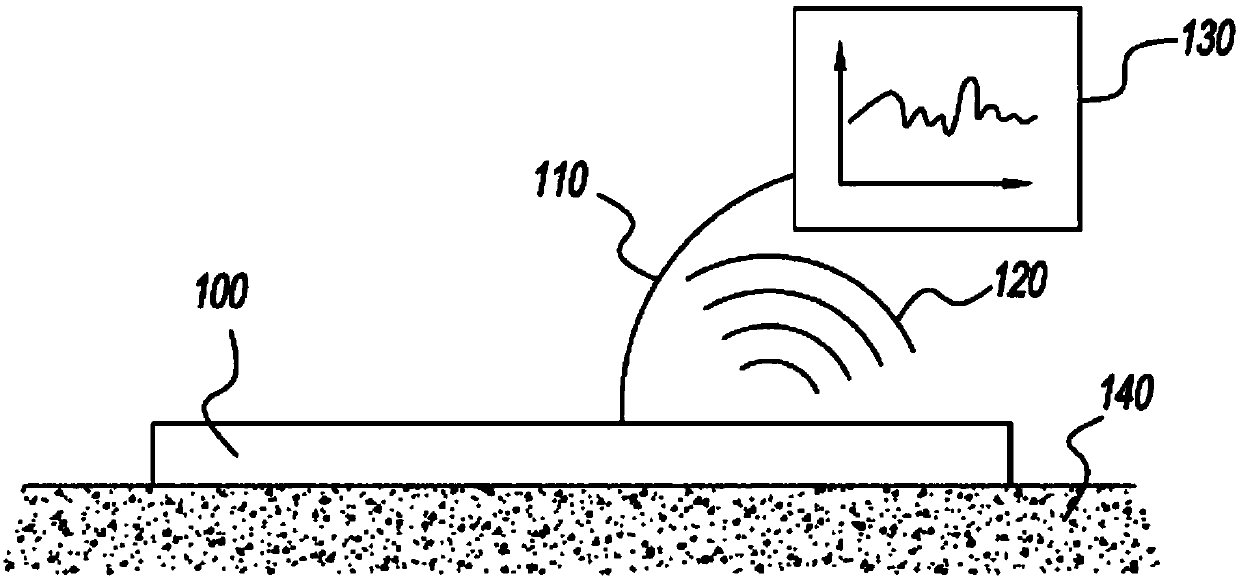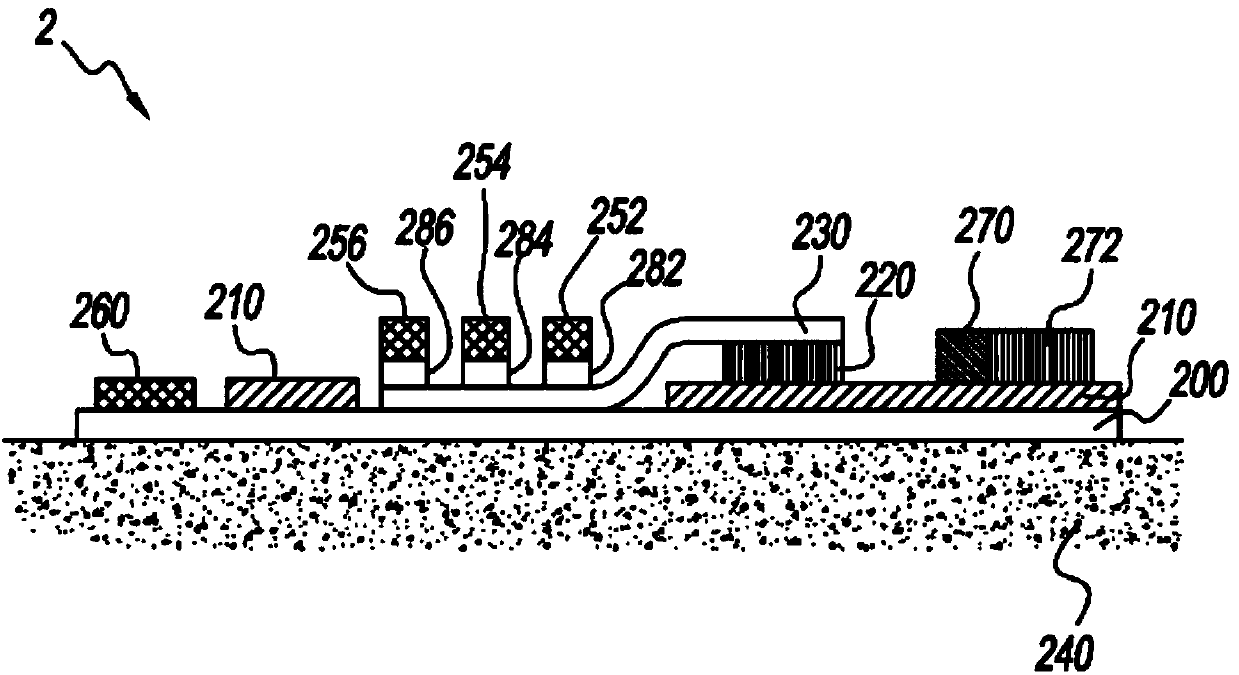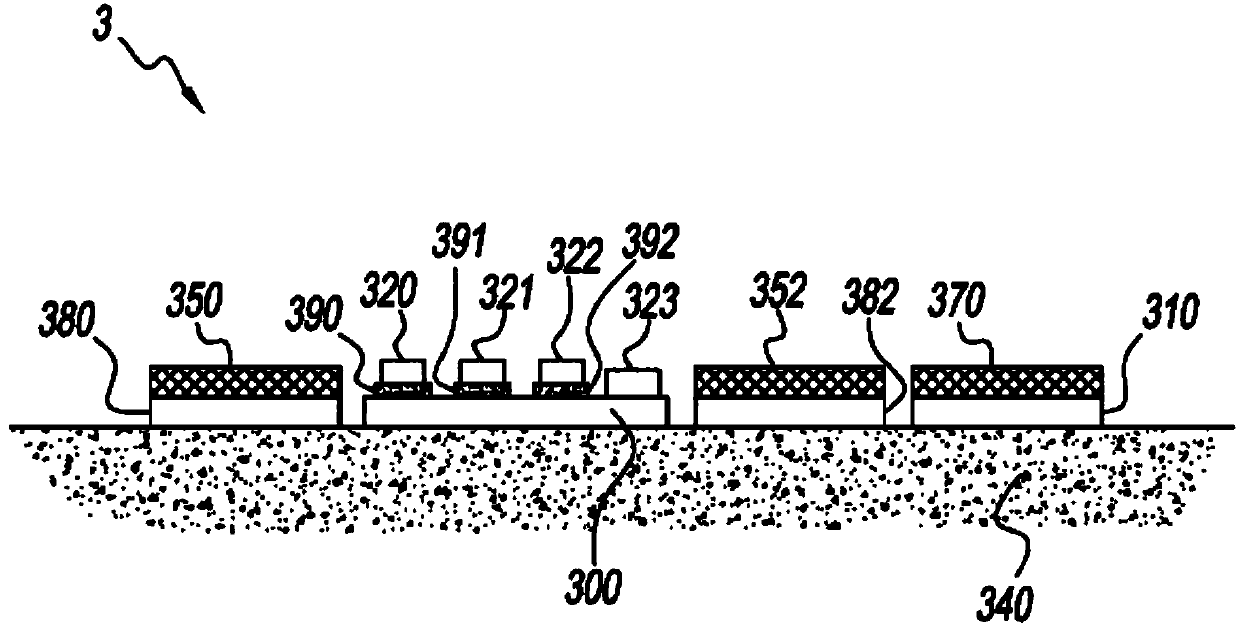Dynamic sweat sensor management
A sensor and sensor device technology, applied in sensors, blood characterization devices, medical science, etc., can solve problems such as lack of sampling devices, difficulty in producing sweat, and errors in results
- Summary
- Abstract
- Description
- Claims
- Application Information
AI Technical Summary
Problems solved by technology
Method used
Image
Examples
example 1
[0070] Example 1: A patient is undergoing a clinical trial of a new oncology drug. Based on the test profile developed for the trial, the device has been configured to monitor on a near-continuous basis a panel of three analytes whose relative concentrations and concentration trends in sweat provide a reasonable determination of whether a patient is taking a drug. The presence of a fourth analyte in sweat would confirm that the patient has taken the drug, however, the specialized sensor required to detect this analyte is a single-use sensor. Therefore, the device also includes a limited number of disposable sensors. Each disposable sensor is isolated from sweat by a selectively permeable membrane. When the multiple-use sensor indicates that the patient has taken their medication, the device waits a precalculated interval before activating electrodes near the unused disposable sensor, causing the membrane to open and drain sweat to the sensor. The device then activates the di...
example 2
[0071]Example 2: Cyclists compete in multiple periods of a multi-stage race. The estimated battery life of the sweat sensor unit is expected to last a full game day. When a sweat sensor device is first applied, the device undergoes a calibration procedure that is used to determine that the device is in good contact with the skin for proper operation, and to calculate the optimal and minimum activation currents and Voltage. During the competition, the unit takes routine power consumption measurements and determines that the power consumption is greater than expected, and the unit's battery power is not expected to last the full period. The unit also took age-guaranteed readings and found that the minimum time interval for confident sweat readings was 10 minutes. Therefore, the device ensures that the K+ sampling interval is greater than the minimum of 10 minutes, stops supplying the activation current to a part of the K+ sensor group, and reduces the activation current to the...
Embodiment 4
[0073] Example 4: Children with type I diabetes wear a sweat detection device at night according to the doctor's advice. The sweat sensing system consists of a kit of devices configured to monitor hypoglycemic conditions through the amount and ratio of glucose and at least one other relevant analyte (e.g., cortisol) detected in sweat . The kit also contains a bedside transceiver that communicates wirelessly via the Internet with the parent's smartphone. A device is placed on the child's skin while they sleep. When in use, the unit performs a start-up procedure and initial calibration, and establishes communication with the bedside transceiver, which sends a status message to the parent's smartphone that the system is fully operational. When an initial low blood sugar reading is taken and detected to be normal, the device sets the initial test interval to 15 minutes. After 3 hours, the device took a routine hypoglycemia reading, which indicated a downward trend in glucose an...
PUM
 Login to View More
Login to View More Abstract
Description
Claims
Application Information
 Login to View More
Login to View More - R&D
- Intellectual Property
- Life Sciences
- Materials
- Tech Scout
- Unparalleled Data Quality
- Higher Quality Content
- 60% Fewer Hallucinations
Browse by: Latest US Patents, China's latest patents, Technical Efficacy Thesaurus, Application Domain, Technology Topic, Popular Technical Reports.
© 2025 PatSnap. All rights reserved.Legal|Privacy policy|Modern Slavery Act Transparency Statement|Sitemap|About US| Contact US: help@patsnap.com



